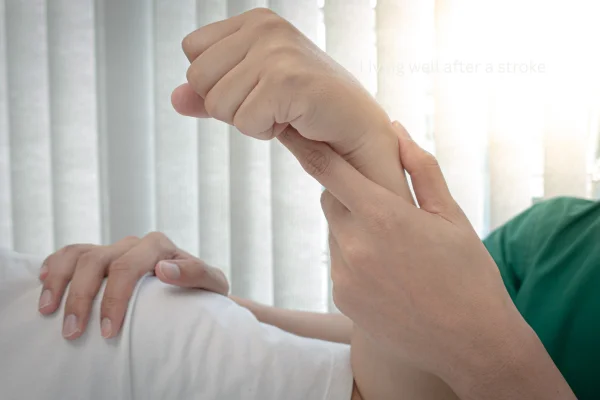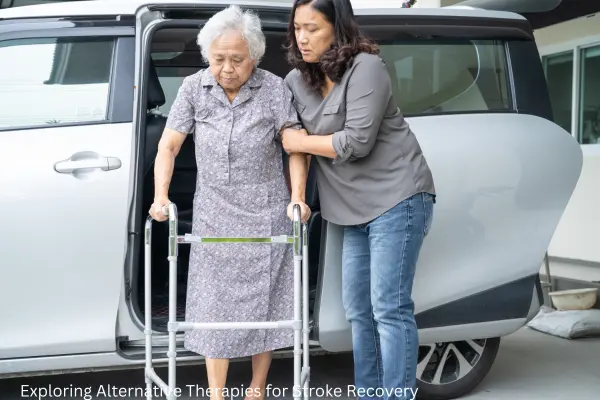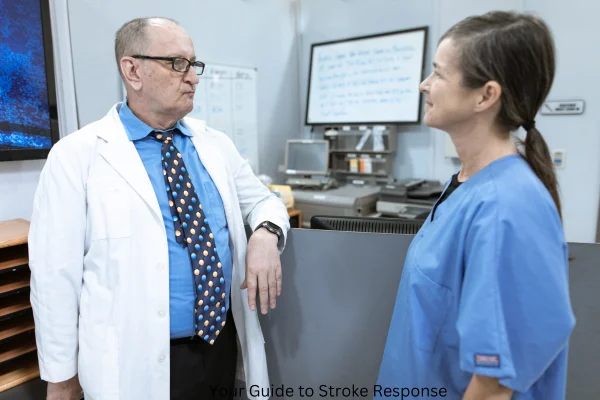The First 7 Days After a Stroke: A Guide to Recovery & Care

A sudden medical event can flip life upside down in moments. That first stretch of days often becomes a critical phase for both the individual and loved ones, filled with assessments, emotional changes, and preparation for what’s ahead. When such an experience happens, feeling uncertain, anxious, or flooded with questions about what comes next is completely natural.
Day 1: Emergency Care
Once it happens, every passing second carries weight. Many individuals reach a hospital within just a few hours, where medical teams act fast to assess what’s going on. Their focus centers on identifying what kind of event has taken place and how to address it right away.
Ischemic Episode: This occurs when a vessel delivering blood to the head becomes blocked, cutting off essential oxygen and nutrients from affected areas. It is a common form of such an episode and can cause sudden weakness, speech difficulties, blurred vision, or loss of coordination. Quick medical intervention is crucial to restore proper flow and limit lasting effects.
Hemorrhagic Episode: This happens when a vessel within the head bursts, spilling blood into nearby tissues. Rising pressure inside the skull can harm delicate structures and interrupt normal processes. High pressure, vessel defects, or injury often act as triggers. Signs may appear suddenly, such as intense headache, nausea, vomiting, weakness on one side, speech difficulty, or vision disturbance. Quick medical action remains essential, since timely treatment can lessen lasting harm and improve recovery.
Doctors will likely run tests such as:
- CT scan or MRI can identify affected areas and evaluate severity of condition.
- Blood tests to check for underlying issues.
- Heart tests (ECG, echocardiogram) to see if heart problems contributed.
For more frequent cases, clot-dissolving medication (tPA) may be administered within about 3 to 4.5 hours to restore normal circulation. In some instances, a procedure called mechanical thrombectomy can be done to manually remove a blockage.
When bleeding occurs, treatment often centers on stopping further leakage, stabilizing pressure levels, and, if needed, performing surgery to ease strain inside the skull.
During this period, medical teams watch patients closely for possible complications such as:
Swelling within brain tissue
Difficulty breathing or swallowing
Irregular heart rhythms or infections
Day 2-3: Hospital Monitoring and Early Assessments
By day two or three, hospital staff usually begin to gain a clearer understanding of what’s happening. Around this time, everything tends to sink in a bit more. Emotions often run high, and adjusting can feel overwhelming. Effects differ from person to person—some may notice weakness on one side, struggle to speak clearly, or experience changes in vision. Others might feel disoriented, confused, or not quite like themselves. Shifts extend beyond physical symptoms, with emotional ups and downs—such as sadness, frustration, or anxiety—being quite common.
Common effects include:
Weakness or paralysis, often affecting one side.
Slurred speech or difficulty finding words.
Visual disturbances such as blurriness, double vision, or loss of sight in one eye.
Cognitive changes like memory gaps, confusion, or poor concentration.
Emotional fluctuations including depression, anxiety, or mood swings.
During this stage, speech, physical, and occupational specialists usually evaluate how daily functions have been affected. They may check:
Whether swallowing remains safe.
If sitting, standing, or controlled movement is possible.
How well communication and comprehension are functioning.
Early rehabilitation often begins in a hospital setting. Gentle exercises—such as guided limb movements or swallowing practice—can lower risks of complications and encourage gradual improvement.
This period also allows relatives and close friends to take in what has happened and begin planning for what comes next. Professionals involved typically discuss different strategies tailored to current needs, helping everyone understand available options. These plans may involve closer participation during recovery or a step-by-step reintroduction of daily routines once home.

Day 4-5: Beginning Rehabilitation and Understanding Challenges
Rehabilitation is crucial and starts as early as possible. Even if movements or speech seem difficult now, the brain has an incredible ability to heal and rewire itself—a process known as neuroplasticity.
The medical team may start working on:
- Building strength and enhancing mobility takes center stage. Through guided practice, simple movements—such as raising an arm, bending a leg, or sitting up straight—are repeated regularly to restore coordination and improve balance. Gradually, each session encourages smoother motion, greater control, and confidence in performing daily physical tasks.
- Working on speech and swallowing can be tough at first, but it’s an important part of rebuilding daily function. A specialist may help guide exercises that improve how clearly one can speak and how safely they can swallow. These sessions often include practicing certain sounds, building strength in facial muscles, and learning techniques to make communication smoother. With time and consistency, progress usually becomes noticeable—even if it’s one small step at a time.
- An occupational specialist focuses on everyday activities that may feel unfamiliar—such as dressing, using utensils, or writing a grocery list. Sessions aim to restore independence in handling daily life. Therapy may begin with simple exercises or adaptive tools to make tasks easier, gradually building confidence and bringing comfort back to routines that once felt natural.
Many survivors face post-stroke fatigue, which makes even small tasks exhausting. This is normal, and rest is just as important as therapy.
Additionally, some people experience post-stroke depression due to sudden changes in their abilities. Support from family, friends, and mental health professionals can make a big difference.
At this stage, conversations may begin about where a patient will go after leaving hospital:
Inpatient rehabilitation center: Designed for individuals requiring round-the-clock, structured therapy in a controlled setting before returning home. This type of facility provides a comprehensive program that includes daily physical, occupational, and specialized therapies, alongside monitoring by trained professionals. Residents benefit from a consistent routine, access to equipment, and a safe environment that promotes steady recovery, addressing both physical and functional goals while fostering confidence for a smooth transition back to daily life.
Skilled Nursing Facility: For situations where continuous attention from trained professionals is necessary, a skilled nursing facility provides around-the-clock oversight and specialized services. Residents have access to licensed staff capable of managing complex needs, monitoring conditions closely, and administering treatments or therapies that require professional expertise. This setting ensures that all medical, rehabilitative, and daily living requirements are addressed in a structured and safe environment, giving families peace of mind knowing that qualified personnel are present at all times.
Home-Based Outpatient Therapy: Aimed at individuals with mild to moderate symptoms, this approach supports recovery within a familiar environment. Scheduled sessions with trained professionals take place at home or a nearby clinic, focusing on exercises, routines, and monitoring designed to encourage gradual improvement. This setup offers flexibility while maintaining consistency, allowing progress without full-time facility stays. Family members or housemates can observe sessions and assist with basic daily tasks under guidance from a therapist.
Families are advised to have detailed discussions with professionals about upcoming weeks, including expected routines or activities and any adjustments needed once returning home. Conversations may cover practical arrangements, available resources, and strategies for managing daily tasks during the transition period.
Day 6-7: Preparing for Discharge and Next Steps
By the end of an initial intense week, focus often shifts toward what comes next. Once stability is achieved, planning for a return home usually begins. This transition can bring a mix of relief and nerves—leaving a facility feels encouraging, yet plenty must be considered before starting a new chapter.
Things to Consider Before Going Home:
Home Modifications: Examine layout of living space carefully. Are stairs present, and if so, are they easy to navigate safely? Identify spots where footing may be tricky or pathways that are narrow and could make movement difficult. Installing grab bars near entrances, bathrooms, or other key areas can provide added stability. Consider ramps or gentle inclines to improve access for anyone with limited mobility. Focus on lighting and floor surfaces, making sure transitions between rooms are secure and minimize risk of trips or falls.
Daily Assistance Plan: Decide who can manage routine tasks such as cooking, cleaning, errands, and organizing daily life. Determine if specialized assistance from trained professionals at home is needed for tasks requiring extra attention or oversight. Assess level of involvement required throughout day and identify dependable options to ensure these responsibilities are consistently covered.
Medication Management: Survivors may be prescribed blood thinners, blood pressure medication, or cholesterol-lowering drugs to prevent another stroke.
Follow-up Appointments: Scheduling regular check-ins ensures consistent monitoring of recovery or improvement. Attending these sessions allows for early detection of any changes or complications, making it easier to address concerns promptly and prevent them from escalating. Maintaining this routine also provides a clear record of ongoing developments over time.
If rehabilitation is needed, it’s important to stick with therapy—progress can be slow, but consistency is key.
Emotional and Psychological Support
Many individuals recovering from this condition struggle with frustration, sadness, or fear about the future. Encouragement, patience, and mental health support—such as counseling or peer support groups—can be incredibly beneficial.
Emotional Side of Recovery
Getting back on your feet isn’t only about physical healing—it’s a challenge for the mind as well. Feeling overwhelmed, irritable, or emotionally drained during sudden changes is completely normal. Even family, friends, or close companions may run low on energy while trying to manage everything. Open conversations with trusted individuals, connecting with others who have gone through similar experiences, or speaking with a counselor can make the process feel less isolating and more manageable.
Fueling Your Comeback: What You Eat Matters
Daily food choices directly affect energy, focus, and overall vitality. Including items rich in omega-3s, such as salmon and walnuts, delivers nutrients that support mental clarity and alertness. Vibrant vegetables like spinach, kale, and other leafy greens, along with antioxidant-packed berries, help boost endurance and resilience. Conversely, heavily salted, overly processed, or greasy foods can drain energy and slow optimal functioning. Gradually introducing nutrient-dense options—even a few at a time—can lead to noticeable improvements in stamina, concentration, and overall balance.
Avoiding Common Setbacks
Initial seven days are critical, as multiple complications can arise and slow recovery. Trouble swallowing can raise risk of respiratory infections, while extended immobility may lead to blood clots. Skipping personal hygiene can cause additional infections. Regular movement, frequent position changes, sufficient fluid intake, and careful adherence to professional guidance are essential strategies to lower these risks and support smoother recovery during this vulnerable period.

Common Questions
Is it possible to fully bounce back after such a serious event?
Healing progress varies from person to person. Some regain most or all abilities, while others face lasting challenges. Initial months are especially important for rebuilding strength and regaining function.
How long do people typically stay in hospital after a medical event like this?
Length of a hospital stay largely depends on severity at admission and how recovery progresses during initial critical days. Patients usually remain under close observation for about 4 to 7 days. In some cases, extra days may be needed if complications appear or intensive monitoring is required. After discharge, recovery often continues either at a rehabilitation facility or through scheduled visits from trained professionals at home, supporting a gradual return to daily activities.
What can family members do to help?
- Be patient and encouraging.
- Help with daily tasks without taking over completely.
- Learn about recovery and treatment options after this condition.
- Offer emotional support.
What are chances of experiencing another episode?
Risk of recurrence is highest during first few weeks, but adopting lifestyle changes—such as improving diet, staying active, quitting smoking, and taking prescribed medication—can significantly reduce chances of it happening again.
Why Do Survivors Experience Personality Changes or Unusual Behavior?
Experiencing an event like this can deeply affect thoughts, emotions, and reactions. Specific areas within the brain influence mood, emotional responses, and impulse control. Depending on which region is affected, noticeable changes may include:
Emotional outbursts or mood swings: Some survivors may cry or laugh uncontrollably, a condition called pseudobulbar affect (PBA). This happens due to damage in areas of the brain that regulate emotions.
Increased frustration or aggression: If the stroke affects the frontal lobe, it can lead to impulsive behavior, irritability, or a short temper.
Loss of drive or motivation may appear when activities that once felt enjoyable—such as favorite hobbies, socializing, or routine tasks—no longer bring satisfaction. While it might seem like simple sadness or laziness, underlying causes often run deeper. Changes in central nervous system function can affect how energy, focus, and interest are experienced, making it hard to feel the same spark for things that once brought joy. This isn’t just a temporary mood change—it reflects a meaningful shift in how signaling systems operate.
Personality shifts: A previously outgoing person may become reserved, or vice versa. Some may lose social awareness and say inappropriate things without realizing it.
Personality changes can be among most challenging experiences for both individuals experiencing them and those around them. Understanding these shifts requires patience and open, honest communication. Guidance from trained professionals or counselors can offer strategies for handling daily interactions, managing emotional responses, and adjusting to new behaviors, helping make transitions smoother for everyone involved.
Why Do Survivors Experience Sleep Problems?
Rest patterns often become unpredictable after an event like this. Individuals may find it difficult to reach deep sleep, wake frequently during night hours, or feel drained and fatigued throughout day. Nights can become restless, leaving lingering exhaustion. Several factors contribute to these disruptions, including changes in routine, emotional strain, physical discomfort, and adjustments in daily activity levels.
Brain damage: Injuries to certain areas within the head can interfere with natural regulation of sleep cycles. These regions control internal timing that signals when alertness should peak and when fatigue should occur. When these zones are affected, normal patterns of falling and staying asleep can become irregular, making consistent rest difficult to maintain.
Pain or discomfort: Ongoing soreness or tension in muscles, weakness, or sharp nerve sensations can make finding a comfortable resting position difficult. Even mild stiffness may lead to tossing and turning, while stronger sensations can restrict movement and make relaxation hard to achieve. This discomfort often accumulates over time, making it challenging to find a posture that relieves pressure on sensitive areas and allows full unwinding.
Anxiety and depression: After an event of this scale, feeling uneasy or low is common. Thoughts can spiral into endless “what ifs,” while worries about future outcomes often dominate. Nights may become restless as the mind struggles to slow down, leaving constant tension. Adjusting to a new reality can feel overwhelming, and calming a flood of thoughts may seem nearly impossible when familiar routines and surroundings have shifted.
Sleep apnea: Some strokes are linked to obstructive sleep apnea (OSA)—a condition where breathing repeatedly stops during sleep, leading to poor rest.
Medication side effects: Some medications for recovery, like blood thinners or antidepressants, can affect sleep patterns.
Achieving consistent, restorative rest is essential for mental clarity, memory, and emotional balance. Nighttime disruptions—such as frequent waking, trouble falling asleep, or restless hours—can strongly affect alertness and mood during day. Consulting a professional experienced in sleep patterns can reveal underlying factors causing these disturbances. Through careful assessment, personalized strategies can be recommended to encourage longer, uninterrupted rest and enhance overall daily functioning.
Final Thoughts: Journey Toward Recovery
First week after major changes is a whirlwind—thoughts race, emotions swing, and adjustment to sudden shifts can feel intense. Overwhelm and exhaustion are common, with each moment presenting new challenges. Patience with the process is essential. Focusing on one step at a time, creating small routines, and letting each day unfold gradually can help restore a sense of balance and start moving toward normalcy.
When confronting this kind of challenge, approach it gradually, focusing on manageable steps. Even if progress feels slow, every small action contributes to overall improvement. Maintain a hopeful mindset, remain consistent with your efforts, and connect with trusted friends or professionals if guidance or encouragement is needed. This journey doesn’t have to be faced in isolation.
Related posts:
- Gettin’ Back Yer Voice: Tacklin’ Aphasia After a Stroke
- Best Leg Exercises for Stroke Recovery
- Signs & Effects of a Right-Side Stroke Explained
- Overcoming Challenges in Left-Side Stroke Recovery
- Returning to Work After a Stroke: Know Your Rights
- Coping with Memory Loss After a Stroke
- Stroke Finger Exercises: Regain Hand Strength and Dexterity
- How a Stroke Transformed Jill Bolte Taylor’s Life
- Can Eating Eggs Prevent a Stroke? The Surprising Truth
- In-Home Care Costs for Seniors: A Complete Guide